
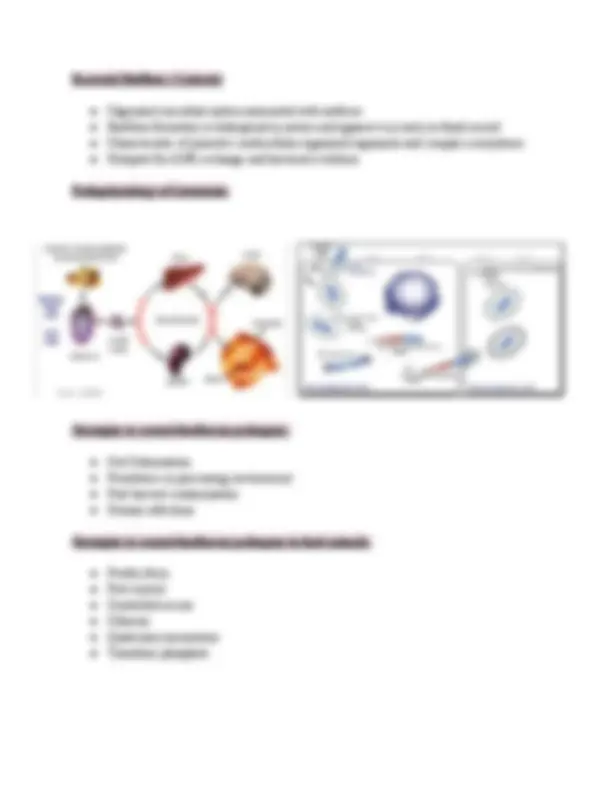
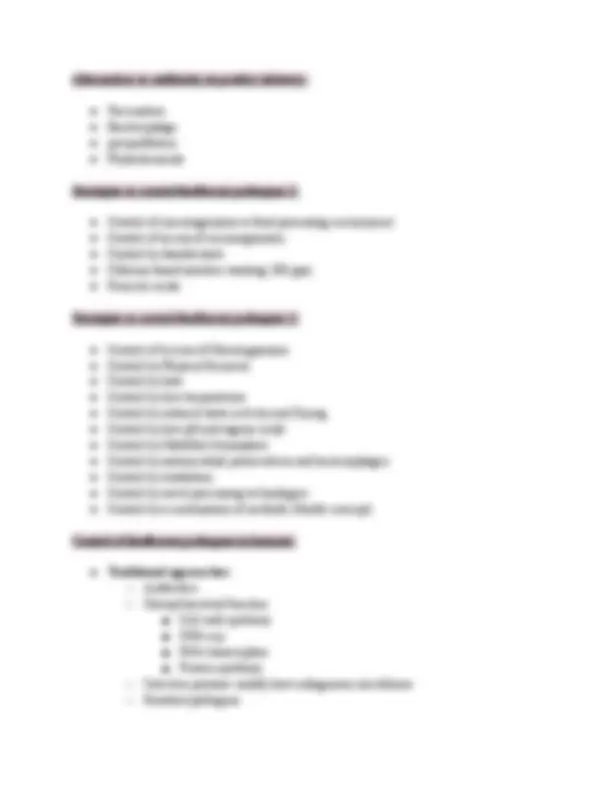
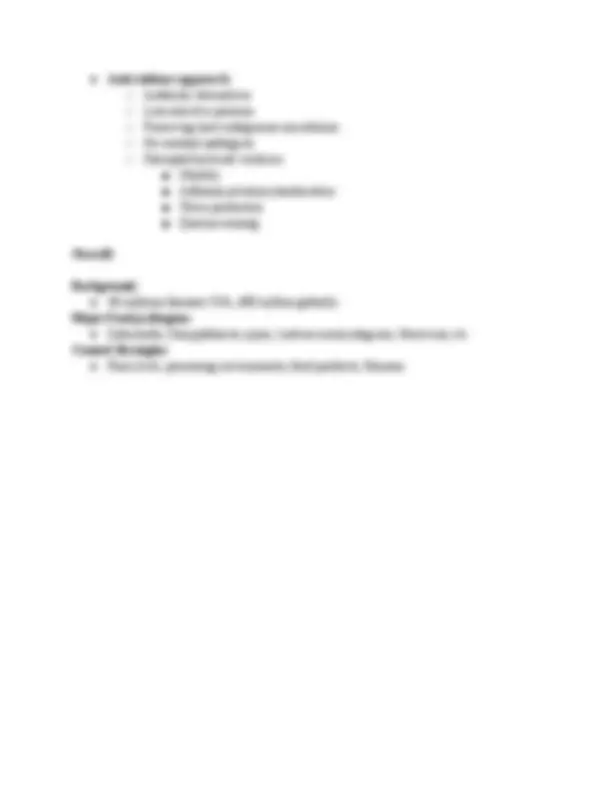
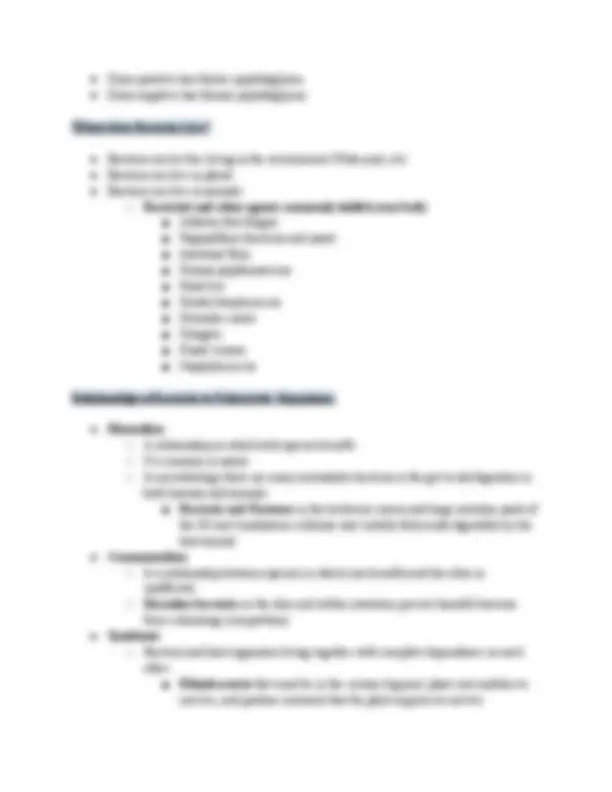
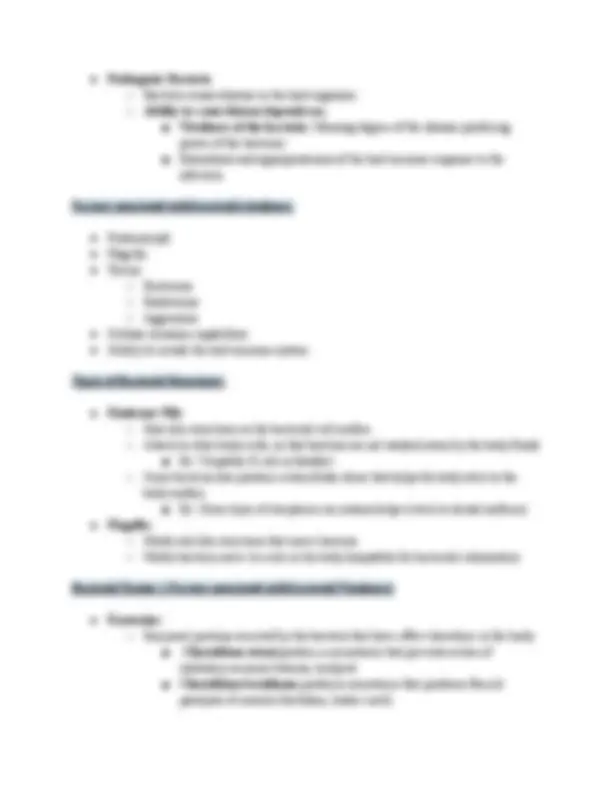
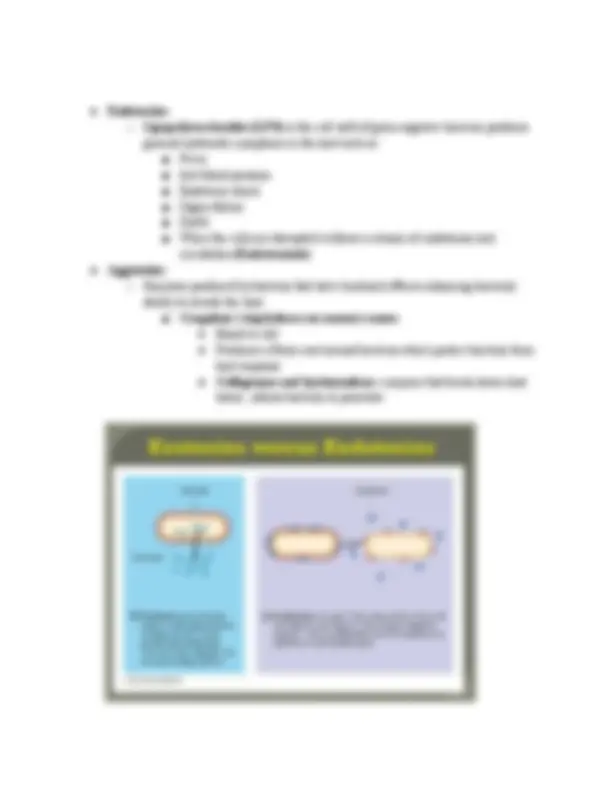
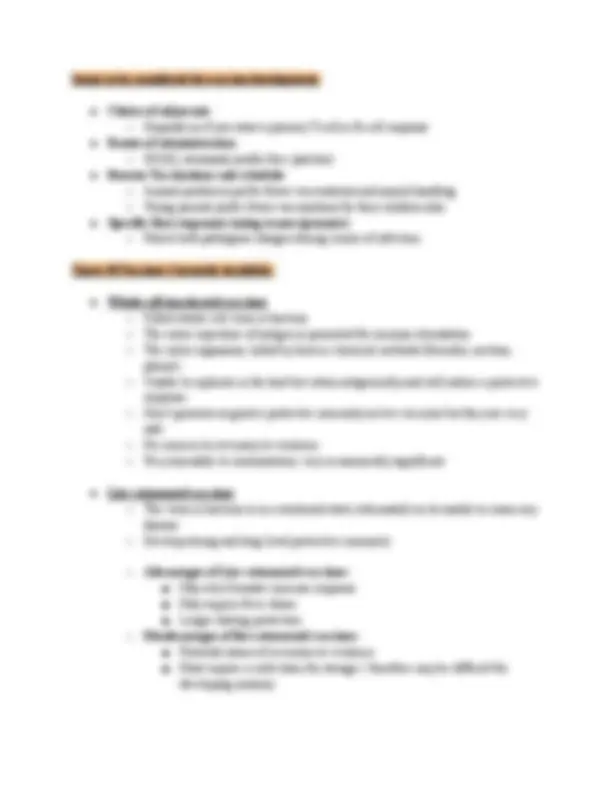
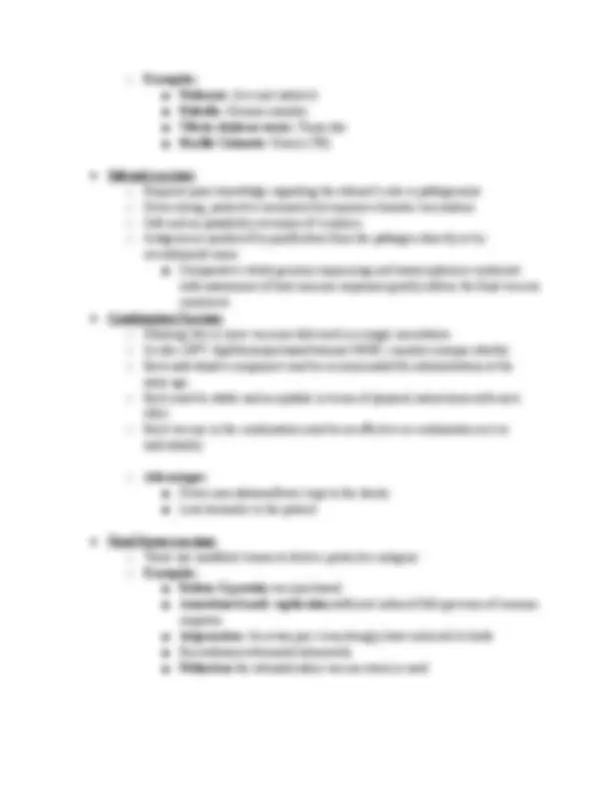
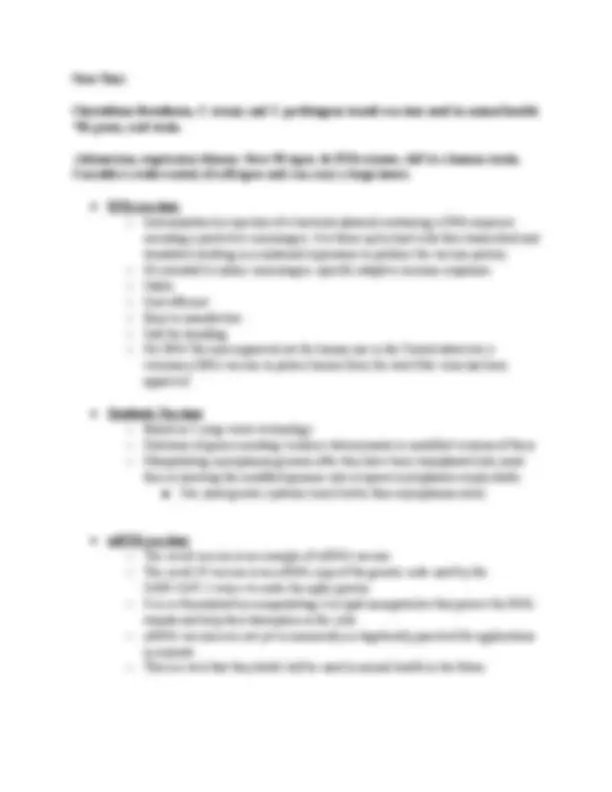
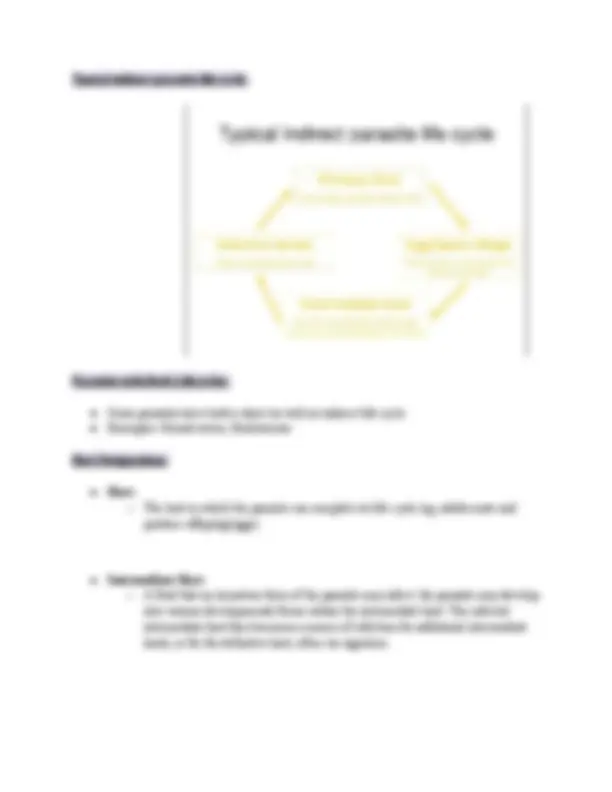
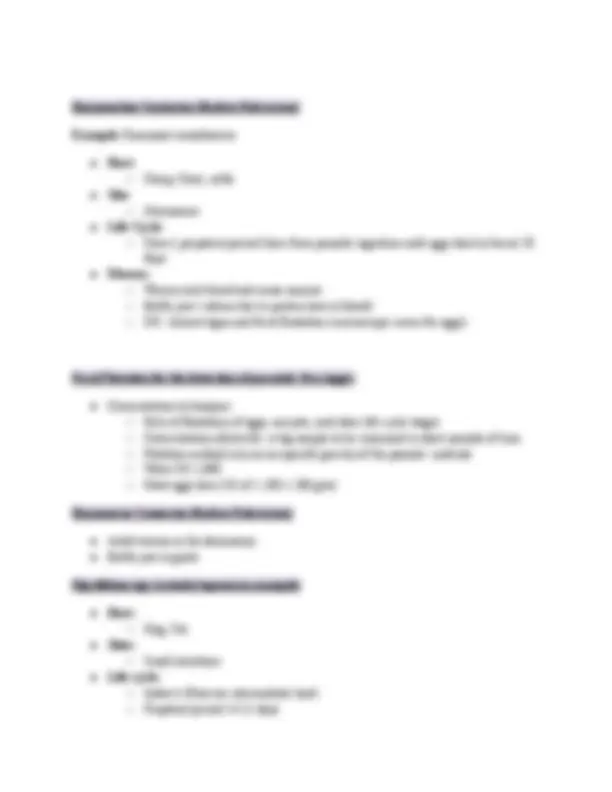
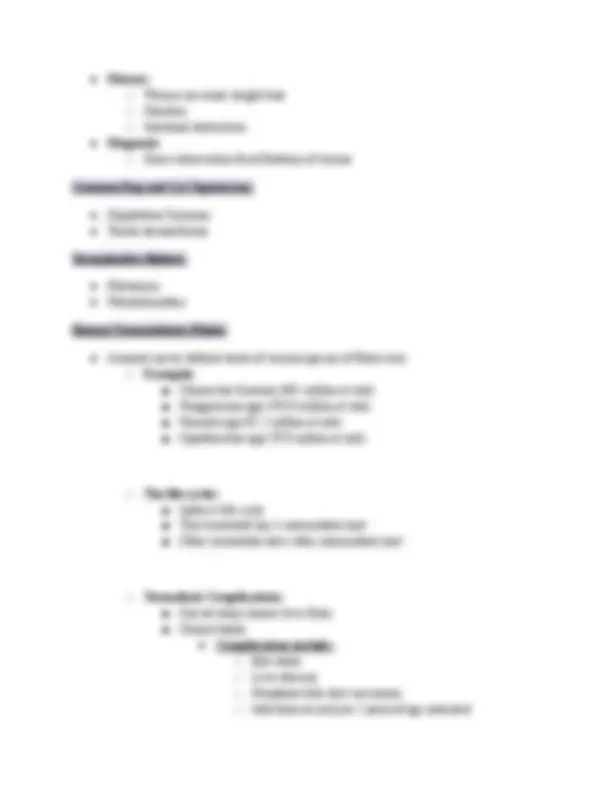
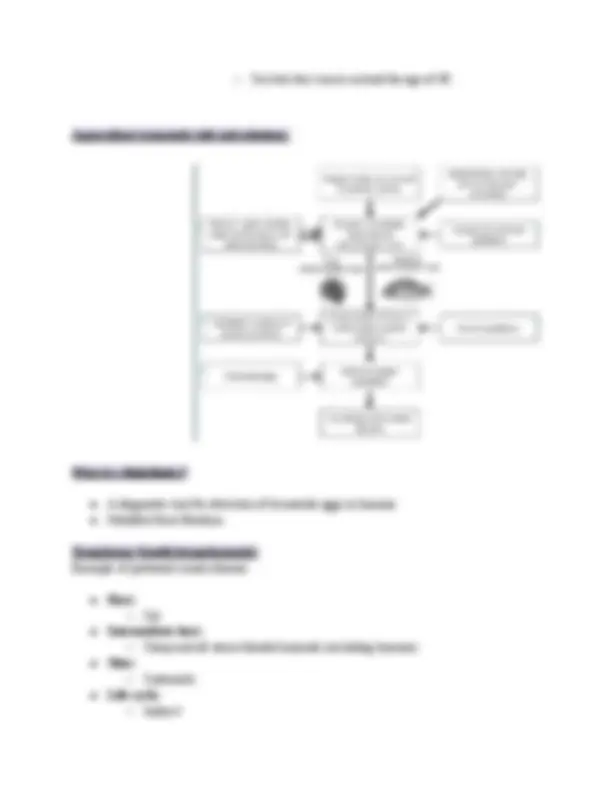
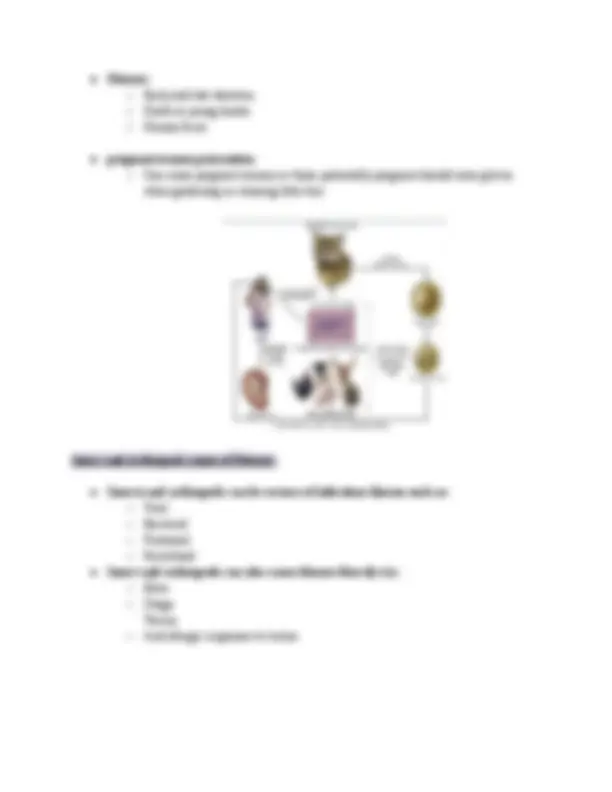
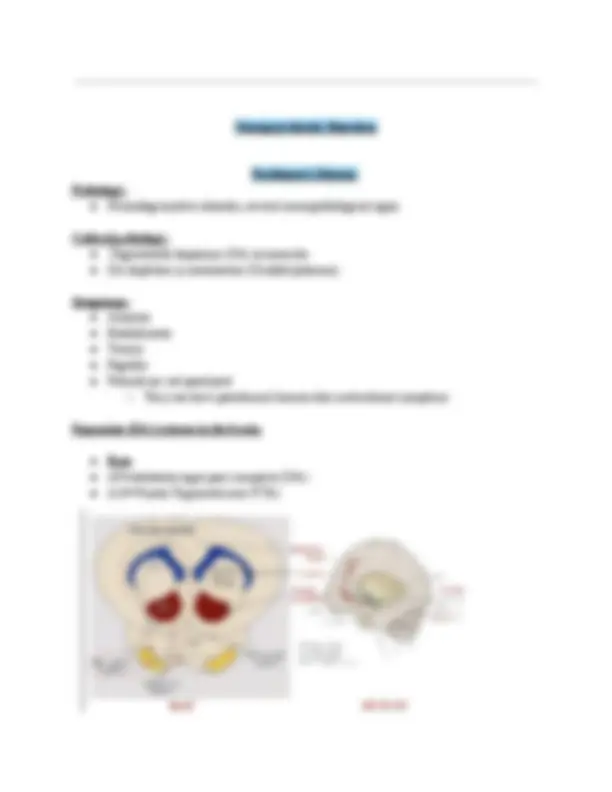
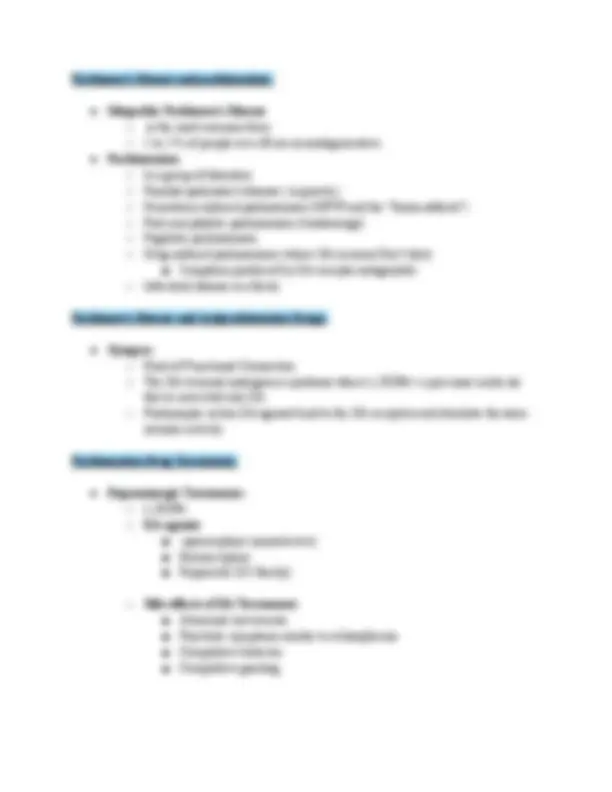
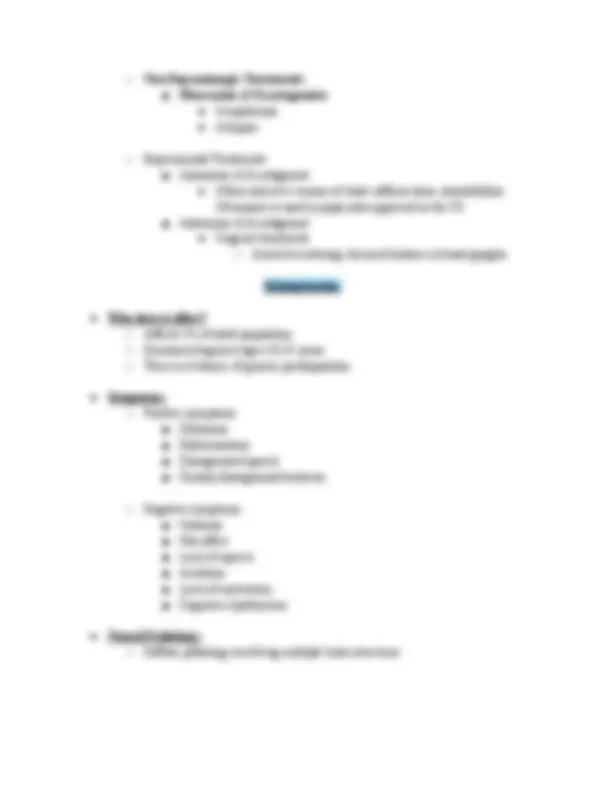
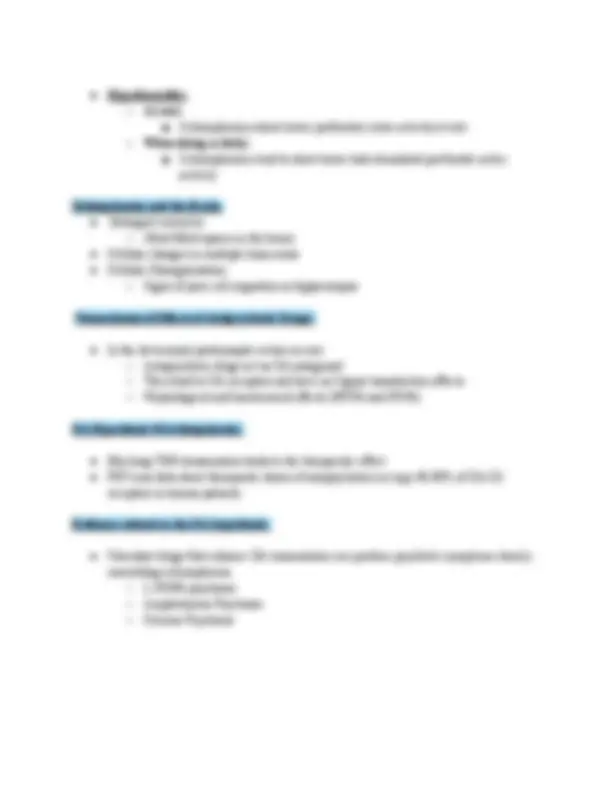
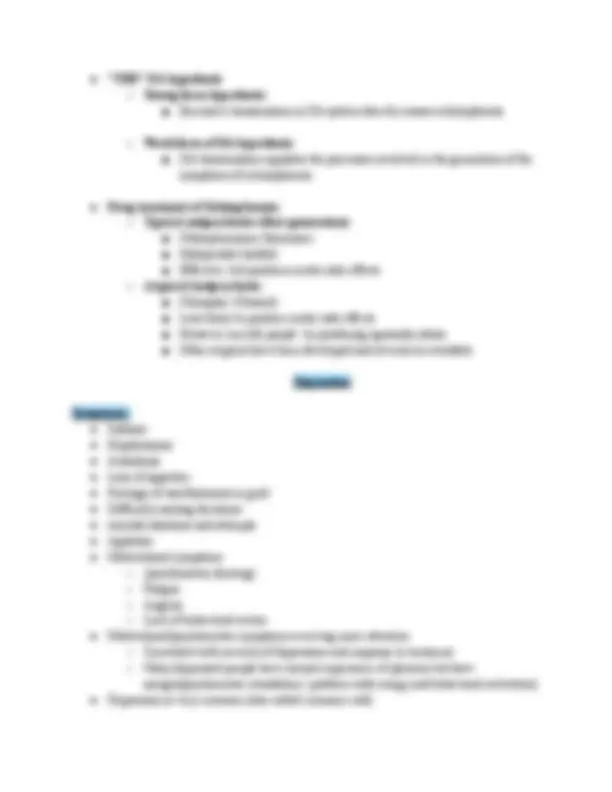
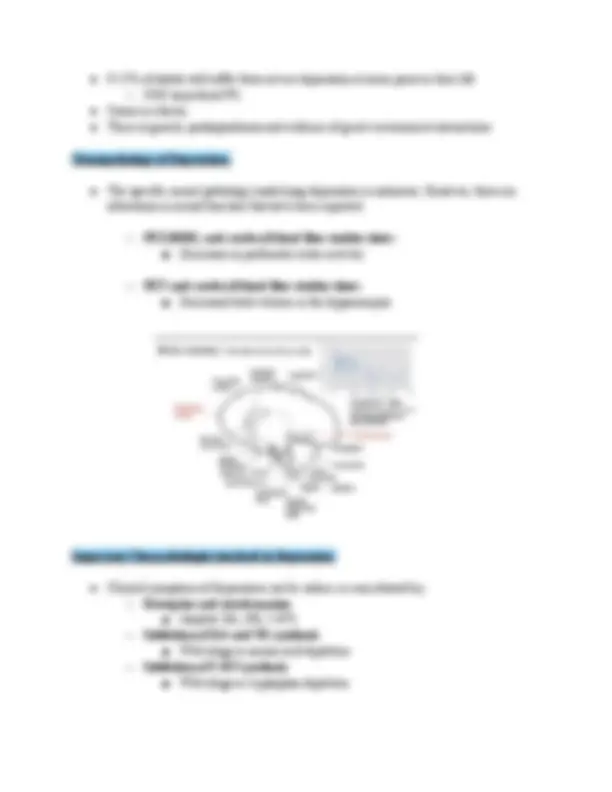
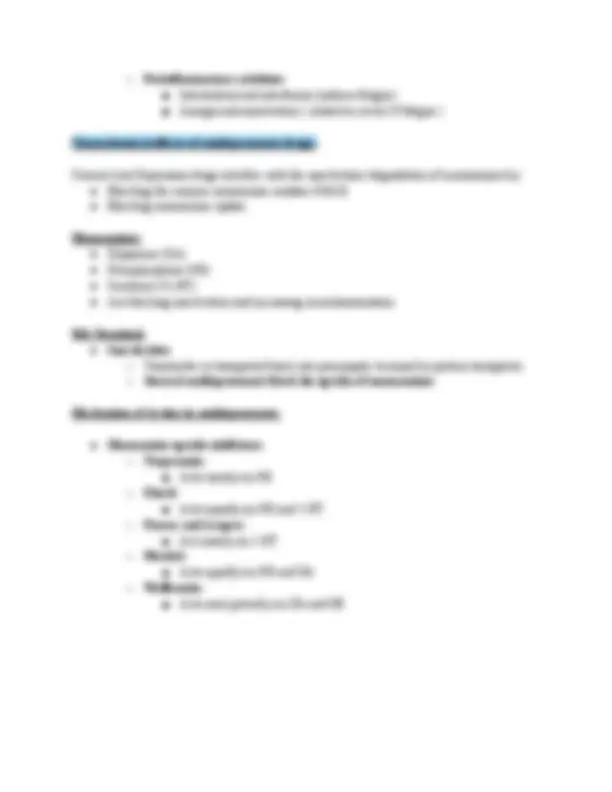
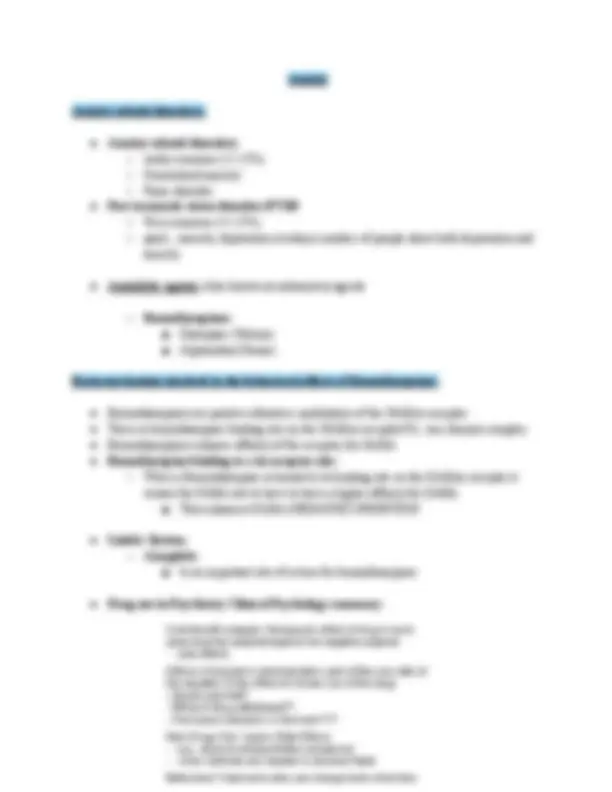
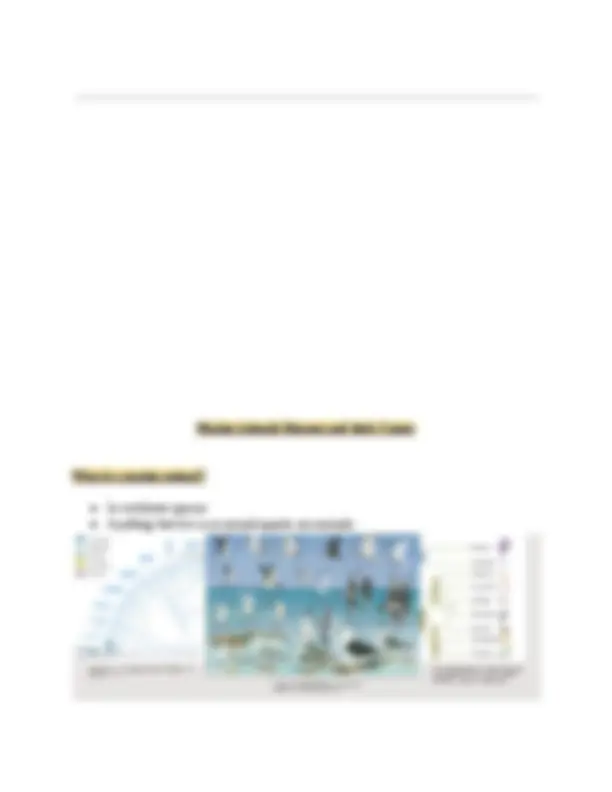
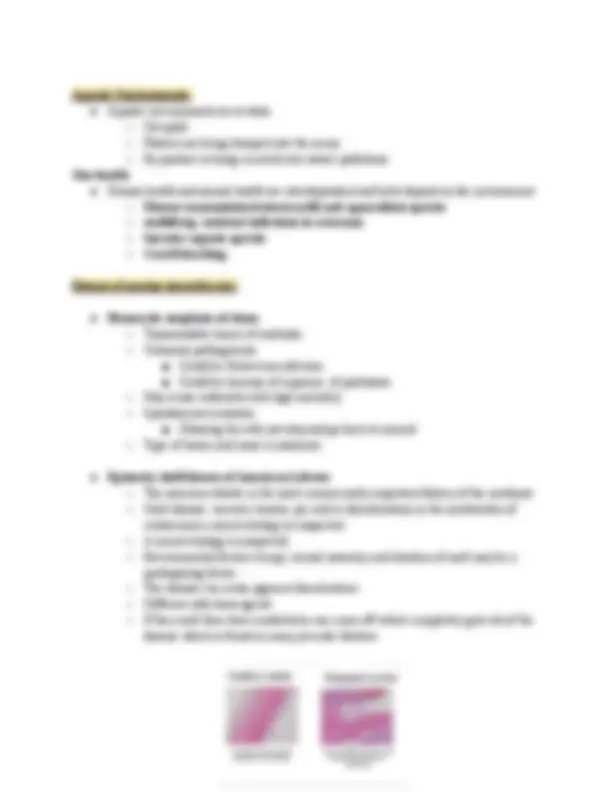
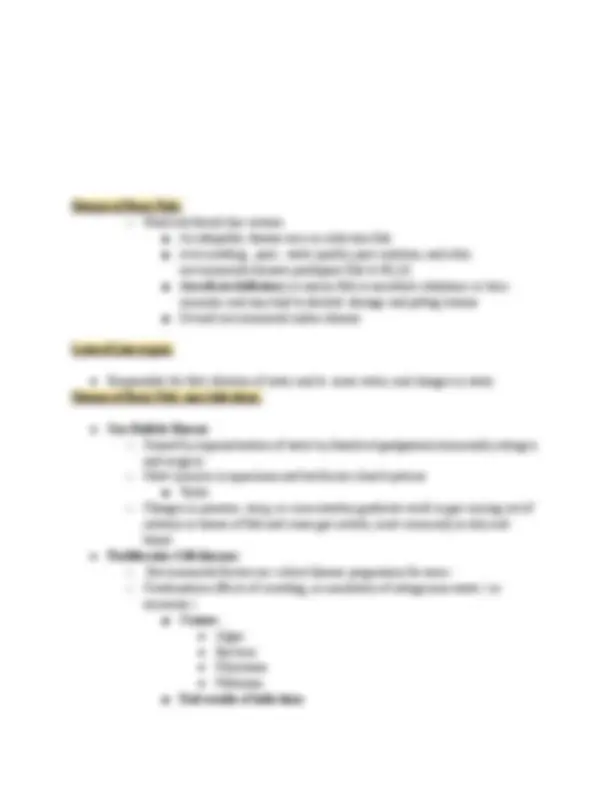
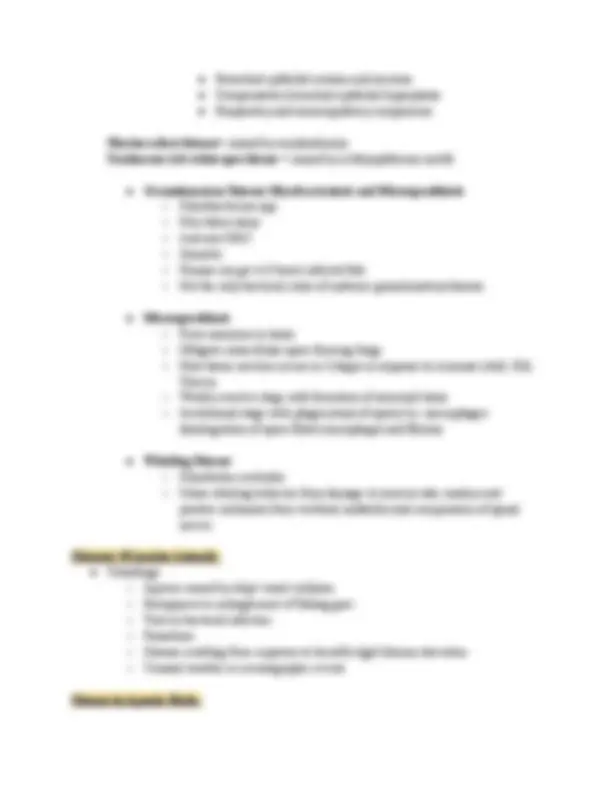


Study with the several resources on Docsity

Earn points by helping other students or get them with a premium plan


Prepare for your exams
Study with the several resources on Docsity

Earn points to download
Earn points by helping other students or get them with a premium plan
Community
Ask the community for help and clear up your study doubts
Discover the best universities in your country according to Docsity users
Free resources
Download our free guides on studying techniques, anxiety management strategies, and thesis advice from Docsity tutors
An overview of food borne diseases, their causes, global impact, and strategies to prevent and control their spread. Topics include common pathogens, food sources, and animals, as well as control methods in food processing and human infections. Discussed are bacterial biofilms, antibiotic resistance, and alternative methods for pathogen control.
Typology: Lecture notes
1 / 34

This page cannot be seen from the preview
Don't miss anything!



























Food Borne Diseases Food borne illnesses in the USA: ● 1 in 6 people get food poisoning ● Each year foodborne infections result in: ○ 48 million illnesses ○ 128,000 hospitalizations ○ 3,000 deaths ○ Annual health care cost ( 15 billion USD) Food borne illness Globally: ● 600 Million illnesses (1 in10) ● 420,00 deaths ● Children under 5 years of age carry 40% of the disease burden 125,000 deaths every year ● US 110 billion is lost each year in medical expenses Causes of Foodborne illnesses: ● Bacteria ● Viruses ( Norovirus, Hepatitis B virus ) ● Parasites (toxoplasma Gondii) ● Prions (Creutzfeldt-jakob, CJD, neurodegenerative disorder- due to consumption of contaminated meat) ● Toxins (clostridium botulinum) ● Harmful chemicals
● Bacteria (The big 8) ○ Salmonella spp. (~ 1.2 million illnesses in the USA) ○ Campylobacter jejuni (~ 1.5 million illnesses in the USA) ○ Enterohemorrhagic Escherichia coli ○ Staphylococcus aureus ○ Clostridium perfringens (~ 1 million illnesses in the USA) ○ Listeria monocytogenes ○ Clostridium botulinum ○ Vibrio ● Major foodborne diseases:
Food Borne Pathogens: ● Host: ○ Chickens ( Carry salmonella spp, campylobacter jejuni) ○ Cows ( Carry Enteromorrhagic Escherichia coli) ● Food Products: ○ Listeria monocytogenes ● Processing Environment: ○ Listeria monocytogenes
Alternatives to antibiotics in poultry industry: ● Vaccination ● Bacteriophage ● pre/proBiotics ● Phytochemicals Strategies to control foodborne pathogens 2: ● Control of microorganisms in food processing environment ● Control of access of microorganisms ● Control by disinfectants ● Chlorine based sanitizer washing 200 ppm ● Peracetic acids Strategies to control foodborne pathogens 3: ● Control of Access of Microorganisms ● Control by Physical Removal ● Control by heat ● Control by low temperatures ● Control by reduced water activity and Drying ● Control by low pH and organic acids ● Control by Modified Atmosphere ● Control by antimicrobial preservatives and bacteriophages ● Control by irradiation ● Control by novel processing technologies ● Control by a combination of methods (Hurdle concept) Control of foodborne pathogens in humans: ● Traditional approaches: ○ Antibiotics ○ Disrupt bacterial function: ■ Cell wall synthesis ■ DNA rep ■ RNA transcription ■ Protein synthesis ○ Selection pressure modify host endogenous microbiome ○ Resistant pathogens
● Anti-violence approach: ○ Antibiotic alternatives ○ Less selective pressure ○ Preserving host endogenous microbiome ○ No resistant pathogens ○ Disrupted bacterial virulence: ■ Motility ■ Adhesion,invasion,translocation ■ Toxin production ■ Quorum sensing Overall: Background: ● 48 millions illnesses USA, 600 million globally Major Food pathogens: ● Salmonella, Campylobacter jejuni, Listeria monocytogenes, Norovirus, etc. Control Strategies: ● Farm level, processing environments, food products, Humans.
How does bacteria compare in size to other cells/particles? ● Eukaryotic cells are smaller than prokaryotic cells Bacterial Shapes (Morphology) ● Spirilla ● Bacilli ● Cocci Gram Positive Vs Gram negative bacteria: ● Gram positive bacteria stain blue with gram stain ● Gram negative stains red with gram stain ● Gram negative bacteria contain endotoxins in their cell membrane ● Peptidoglycan , also known as murein is a polymer consisting of sugars and amino acids that forms a mesh-like layer outside the plasma membrane of eubacteria
● Gram positive has thicker peptidoglycan ● Gram negative has thinner peptidoglycan Where does Bacteria Live? ● Bacteria can be free living in the environment (Water,soil, etc) ● Bacteria can live in plants ● Bacteria can live in animals ○ Bacterial and other agents commonly inhibit your body ■ Athletes foot fungus ■ Vaginalflora (bacteria and yeast) ■ Intestinal flora ■ Human papillomavirus ■ Head lice ■ Dental streptococcus ■ Demodex mites ■ Shingles ■ Fossil viruses ■ Staphylococcus Relationships of bacteria to Eukaryotic Organisms: ● Mutualism ○ A relationship in which both species benefit ○ It’s common in nature ○ In microbiology there are many mutualistic bacteria in the gut to aid digestion in both humans and animals ■ Bacteria and Protozoa in the herbivore rumen and large intestine parts of the GI tract breakdown cellulose into volatile fatty acids digestible by the host animal ● Commensalism ○ Is a relationship between species in which one benefits and the other is unaffected. ○ Harmless bacteria on the skin and within intestines prevent harmful bacteria from colonizing (competition). ● Symbiosis ○ Bacteria and host organisms living together with complete dependance on each other. ■ Rhizobacteria that must be in the certain (legume) plant root nodules to survive, and produce nutrients that the plant requires to survive.
● Endotoxins: ○ Lipopolysaccharides (LPS) in the cell wall of gram-negative bacteria produces general systematic symptoms in the host such as: ■ Fever ■ low blood pressure ■ Endotoxic shock ■ Organ failure ■ Death ■ When the cells are disrupted it allows a release of endotoxins into circulation (Endotoxemia) ● Aggressins: ○ Enzymes produced by bacteria that have localized effects enhancing bacterial ability to invade the host. ■ Coagulase ( staphylococcus aureus) causes: ● Blood to clot ● Produces a fibrin coat around bacteria which protect bacteria from host response ● Collagenase and hyaluronidase : enzymes that break down host tissue , allows bacteria to penetrate
Cellular Invasion capabilities: ● Some bacteria enter host cells ● Replicate within a cell and cause cells to burst ● Organism (protozoal agents, viral agents) invade cells ○ Ex. Salmonella spp invade interstitial epithelial cells, disrupting metabolism and ultimately rupture cell, resulting in hot diarrhea How Bacteria invade the immune system: ● Intracellular location ○ ( Brucella ssp, salmonella spp, Mycobacterium spp) ● Slime layer ○ (bacterial groups living together in a protective biofilm) ● S layer ○ (protein layer in the outermost envelope of the cell wall) ○ protects bacteria from pH changes ○ Enzymes contains adhesins that help bacteria stick to host cells ● Antigenic shifting ○ Changing the outer coat proteins to trick immune respons e ( Borrelia b) Factors associated with bacterial virulence: ● Initiating undesirable immune response: ○ Molecular mimicry leading to autoimmune disease ■ Similarity of bacterial surface antigen to normal protein in the body results in the immune system mounting an immune response that attacks a normal body component. ● Developing of circulating Immune complexes: ○ Soluble antigens produced which bind to antibodies in the bloodstream and are deposited in tissues, such as kidney, causing disease ● Overstimulation of immune response to infection leading to excess inflammation
Issues to be considered for vaccine development: ● Choice of adjuvants ○ Depends on if you want a primary T-cell or B-cell response ● Routes of administration ○ IM,SQ, intranasal,needle-free (patches) ● Booster Vaccinations and schedule ○ Animal producers prefer fewer vaccinations and animal handling ○ Young parents prefer fewer vaccinations for their children also. ● Specific Host responses (using transcriptomics) ○ Paired with pathogens changes during course of infection Types Of Vaccines Currently Available: ● Whole cell inactivated vaccines ○ Killed whole cell virus or bacteria ○ The entire repertoire of antigen is presented for immune stimulation ○ The entire organisms, killed by heat or chemical methods (formalin, acetone, phenol) ○ Unable to replicate in the host but retain antigenically and will induce a protective response. ○ Don’t generate as good a protective immunity as live vaccines but they are very safe ○ No concern to reversion to virulence ○ Very amenable to combinations, very economically significant ● Live attenuated vaccines ○ The virus or bacteria is in a weakened state (attenuated) so its unable to cause any disease ○ Develop strong and long lived protective immunity ○ Advantages of Live attenuated vaccines: ■ May elicit broader immune response ■ May require fever doses ■ Longer lasting protection ○ Disadvantages of live attenuated vaccines: ■ Potential issues of reversion to virulence ■ Most require a cold-chain for storage ( therefore may be difficult for developing nations)
○ Examples: ■ Polivores - live oral (sabin’s) ■ Rubella - German measles ■ Vibrio cholerae strai n- Texas star ■ Bacille Calmette - Guerin (TB) ● Subunit vaccines ○ Requires prior knowledge regarding the subunit’s role in pathogenesis ○ Gives strong, protective immunity but requires a booster vaccination ○ Safe and no possibility reversion of virulence ○ Antigens are produced by purification from the pathogen directly or by recombinants mean ■ Comparative whole genome sequencing and transcriptomics combined with assessment of host immune responses greatly inform the final vaccine constructs. ● Combination Vaccines ○ Meaning two or more vaccines delivered in a single inoculation ○ So like (DPT: diphtheria/pertussis/tetanus) MMR ( measles-mumps-rubella) ○ Each individual's component must be recommended for administration at the same age. ○ Each must be stable and acceptable in terms of physical interactions with each other. ○ Each vaccine in the combination must be as effective in combination as it is individually ○ Advantages: ■ Fewer inoculations/fewer trips to the doctor ■ Less traumatic to the patient ● Viral Vector vaccines ○ These use modified viruses to deliver protective antigens ○ Examples: ■ Rabies G protein- vaccinia based ■ Aenviriuse based: replication- deficient induced full spectrum of immune response ■ Avipoxvirus: An avian pox virus strongly host restricted to birds ■ Recombinant attenuated salmonella ■ Poliovirus -the attended sabin vaccine strain is used
Parasitic Causes of disease Types of Parasites: ● Nematodes - Roundworms ● Cestodes- Tapeworms ● Trematodes- Flatworms ● Protozoa- ● Arthropods/Arachnids- Insects ( directly cause disease or act as vectors of other agents) Domestic Animal Parasites: ● Most animal species ( including humans) have parasites that can infect only one species, some are not as “species specific” and can infect multiple species. Difference Between Insects Vs. Arachnids: ● Arachnids ○ Arthropoda is a phylum that consists of invertebrates with jointed appendages or legs. ○ They consist of a segmented body with a head, thorax, and abdomen. They also consist of a chitinous exoskeleton. ● Both ○ Insects and arachnids are two classes of the phylum Arthropoda. Some of them live as parasites.
● Difference The main difference between insects and arachnids is that insects have six legs and up to four wings whereas arachnids have eight legs. Direct Vs Indirect Life Cycle: ● Direct Lifecycle: ○ Only one host needed for complete parasitic development (from egg to adult to egg) ● Indirect Life Cycle: ○ More than one host is required for parasite to develop from egg to adult to egg Example Direct life cycle- Whipworms Life cycle of parasites: ● Most of the nematode parasites affecting animals (including humans ) have a direct life cycle.
Haemonchus Contortus (Barber Pole worm) Example: Ruminant roundworms ● Host: ○ Sheep, Goat, cattle ● Site: ○ Abomasum ● Life Cycle: ○ Direct; prepatent period (time from parasite ingestion until eggs shed in feces) 20 days. ● Disease: ○ Worms suck blood and cause anemia ○ Bottle jaw ( edema due to protein loss in blood) ○ DX: clinical signs and fecal floatation (microscopic exam for eggs) Fecal Flotation for the detection of parasitic Ova (eggs) ● Concentration techniques ○ Rely of floatation of eggs, oocyste, and other life cycle stages ○ Concentration allows for a big sample to be examined in short periods of time ○ Flotation method rely on on specific gravity of the parasite material ○ Water SG 1, ○ Most eggs have SG of 1.100-1.200 g/ml Haemoncus Contortus (Barber Pole worm) ● Adult worms in the abomasum ● Bottle jaw in goats Dipylidium spp (cestode/tapeworm example) ● Host: ○ Dog, Cat ● Sites: ○ Small intestines ● Life cycle: ○ Indirect (fleas are intermediate host) ○ Prepatent period 14-21 days
● Disease: ○ Worms can cause weight loss ○ Diarrhea ○ Intestinal obstruction ● Diagnosis: ○ Direct observation fecal flotation of worms Common Dog and Cat Tapeworms: ● Dipylidium Caninum ● Taenia taeniaeformis Termadaodes (flukes): ● Flatworms ● Platyhelminthes Human Trematodiasis (Fluke) ● Animals can be definite hosts of various species of flukes too) ○ Examples ■ Clonorchis Sinensis (601 million at risk) ■ Paragonimus spp (293.8 million at risk) ■ Fasciola spp (91.1 million at risk) ■ Opisthorchus spp (79.8 million at risk) ○ The life cycles: ■ Indirect life cycle ■ This trematode has 2 intermediate host ■ Other trematodes have other intermediate host ○ Tremadosis Complications: ■ Can develop chinese liver fluke ■ Clonorchiasis ● Complications include: ○ Bile stasis ○ Liver abscess ○ Neoplasia (bile duct carcinoma ○ Infections as early as 2 years of age untreated